escapees from the screens
translated with Goggle traduction
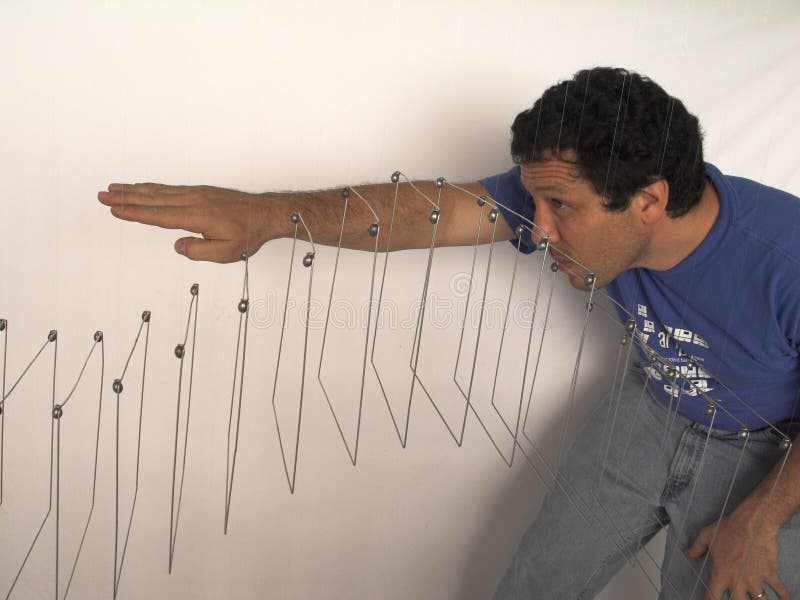 artists who explore four dimensions are rare
artists who explore four dimensions are rare
above Elias Crespin
Now I can say it: my brain is wired in such a way that I think of almost everything in terms of volume. In my head, the weeks and months are like a landscape. The same goes for the calendar and numbers in general. Worse: I got the best grade in my class on my Baccalaureate in Philosophy, a subject where I dreamed up concepts in three dimensions.
Two dimensions, three dimensions… The world we live in appears to us in four dimensions; and our era, like previous ones, is trying, if not to understand it, at least to approach its meaning. This is what the artists on this short list are attempting - in my opinion,
Rémi Brun
Zarkava - Galerie O. Waltman Paris
Rémi Brun sculpts movement using light alone. From video games, he has adopted “Motion Capture,” which allows the actors’ movements to be captured and then brings cartoon characters to life. Brun creates an abstract volume of moving dots. There is no surface and little material. The subject exists in our eyes only through its movement.
Arranged as if at random, the LEDs of his sculptures evoke, as soon as they are lit, the gallop of a horse, the lightness of a ballerina, or the shot of the unforgettable football player of the 2024 Festival of Lights. A transparent form, almost without material, is the negation of everything we used to call “sculpture.” An enigmatic form is the modest support for the lights that will suggest a being through its movement alone.
Animal or human, our way of moving represents us as much as our physiognomy. This is true of a ballerina’s pirouette as of a panther’s powerful sprint. The movement captured and then recreated is like the signature of our era: where previous centuries focused on proportions and materials, our time evokes speed, rhythm, and transformation.
3 309 / 5 000
Fabien Chalon
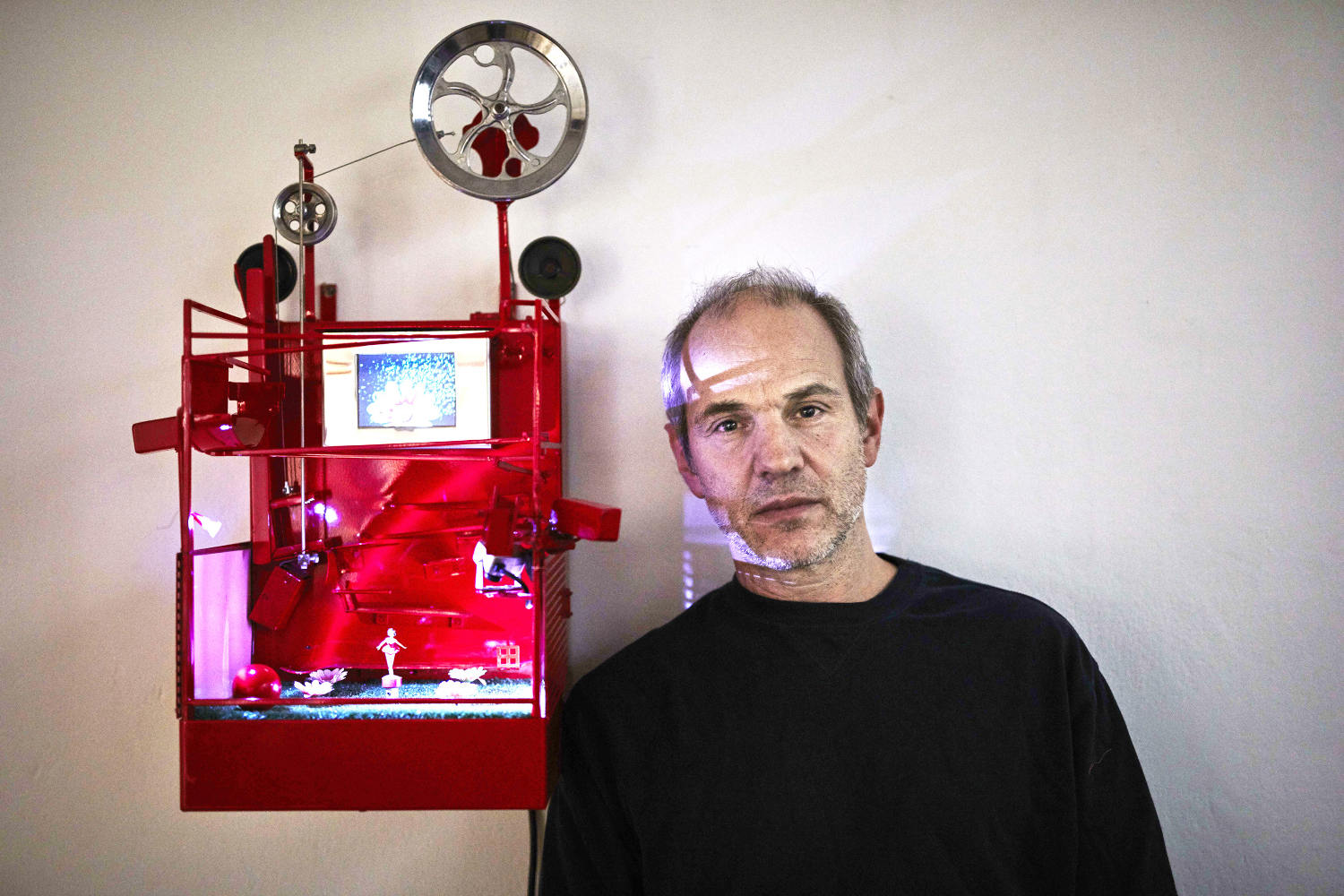
Poetry and dreams are Fabien Chalon’s main materials. These sculptures are captivating because of the unexpected life and meticulous strangeness that Fabien infuses into contemporary techniques that, without him, remain soulless. It’s up to us to let ourselves be carried away. We must take the time to watch these sculptures/worlds evolve and transform. I consider them characters in a dreamlike universe that Fabien invites us to explore in his exhibitions. These are demanding works, which deserve to linger in their poetic company. You will have noticed that each artist on my short list uses the passing of time as a central material. Time is our companion, us artists of movement. All you have to do is use your imagination and enter, as children know how, into these sometimes disconcerting poems “in action.”
https://fabienchalon.fr/fr/accueil
Miguel Chevalier
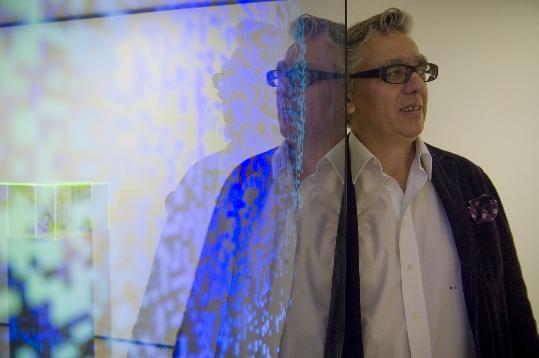
His work is bold and always unexpected. Everything I love. Both in the methods and the techniques he uses with joyful audacity. Miguel knows that art has a history, and he plays with it. He makes eras collide; he appropriates and transforms venerable monuments as well as unusual places. I remember his unforgettable work from 2012 in the quarries of Les Baux de Provence, which he bewitched to music by Michel Redolfi. More recently, the duo moved to the renowned Château d’If (http://www.michelredolfi.info/2024/05/design-sonore-digital-plancton-ia-musique-de-linstallation-de-miguel-chevalier-marseille-mai-sept.2024.html). Miguel also offers more intimate works (https://www.miguel-chevalier.com/work/solo-show-at-art-paris-art-fair-with-lelia-mordoch-gallery) in wall-mounted pieces that explore the shifting transformations of unbridled fractal geometry.
https://www.miguel-chevalier.com/newslist
Elias Crespin
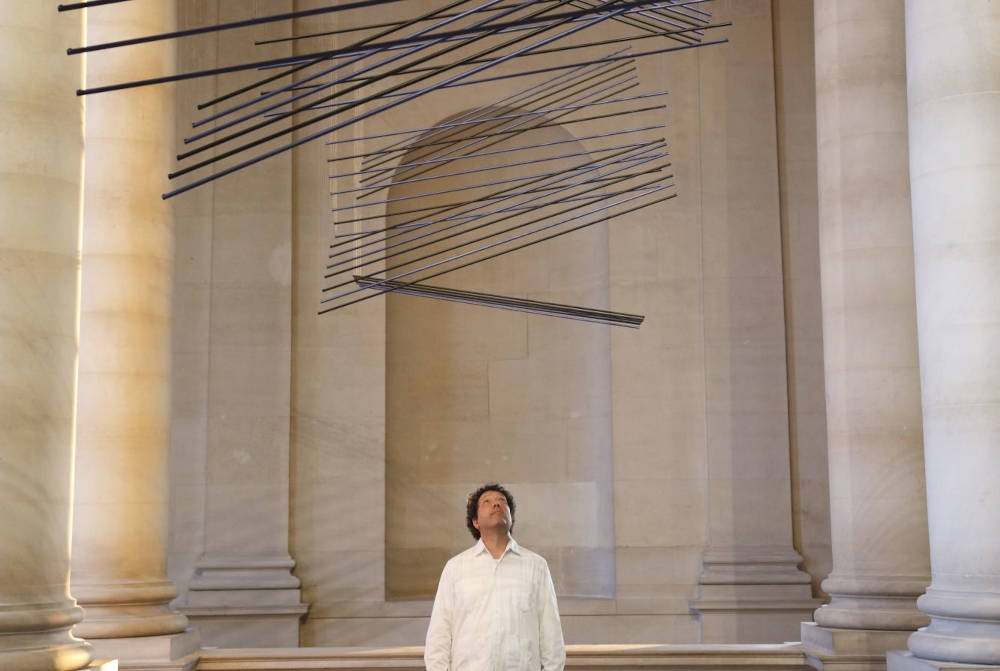
Elias Crespin grew up in Caracas. The son of mathematicians and the grandson of artists, as his biography states, he seems to have brilliantly succeeded in drawing the best from both art and science. After twenty years of computer programming, Crespin created his first piece in 2002. Personally, robotics didn’t work for me, and I took refuge in working with light. Elias persisted, creating magical, aerial mechanisms. The very slow movements of simple shapes suspended from invisible threads are animated by programs. Elias creates a peaceful aerial choreography in space. The shapes evolve and transform slowly, almost imperceptibly. It’s a dance, a geometric ballet in perpetual transformation.
In 2020, Elias Crespin created “L’onde du midi” for the Louvre Museum, the first kinetic work of art in “real virtual reality,” as he explains in this video.
https://www.eliascrespin.net/en/news/
Louis Philippe Demers

Demers is passionate about robotic installations - more than 400 to date. Always interactive, they are sometimes large. Exhibited in art and science museums, Demers has worked for theater, opera, and has also taken over the subway, festivals, and even… technical trade shows.
I particularly liked A Monocular Dialogue. It’s the encounter with a one-eyed robot that stares at you and constantly whispers its inner ruminations. Everyone senses an intriguing similarity between Greek mythology and Artificial Intelligence.
Man doesn’t change… Neither do his myths.
Edward Ihnatowicz
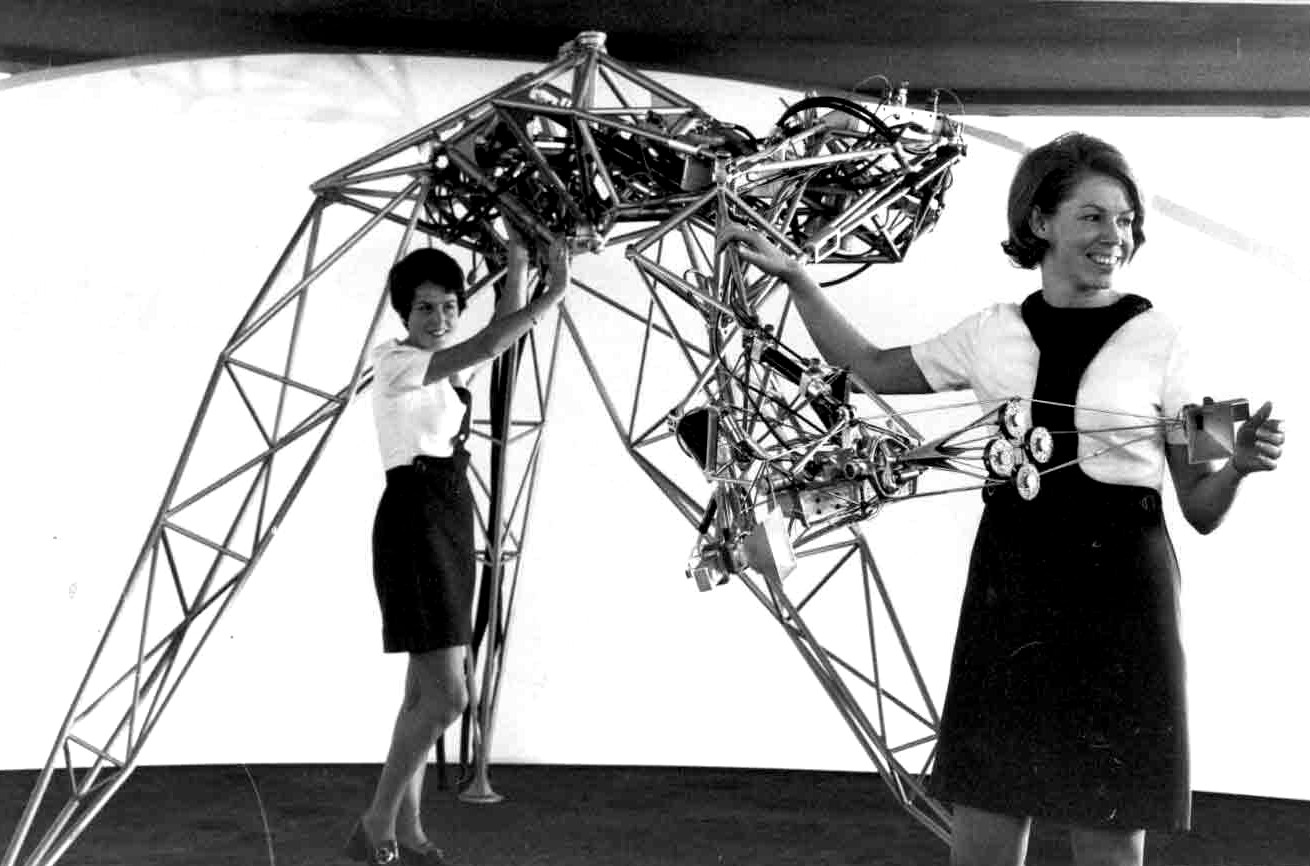 The Senster (Eindhowen - 1969)
The Senster (Eindhowen - 1969)
“Behavioral scientists couldn’t believe that something so simple (the Honeywell was a 12-bit computer with 4 KB of memory) could produce such realistic behavior.”
Unfortunately, the Senster was expensive to maintain, and the Phillips Company abandoned the system in 1975. (Paul Brown)
The Senster is a large, hydraulically powered robot that follows the sounds and movements of the people around it, giving the impression of being alive. It was developed in 1969-71 for Philips’ technology showcase, the Evoluon, in Eindhoven, and Philips unveiled it in 1970. The Senster was probably the first robotic sculpture to be controlled by a computer. It used an array of four microphones to detect the direction of sound around it and two Doppler radar arrays to measure the movement of people.
http://www.senster.com/ihnatowicz/articles/articlesabout.htm
Norman White
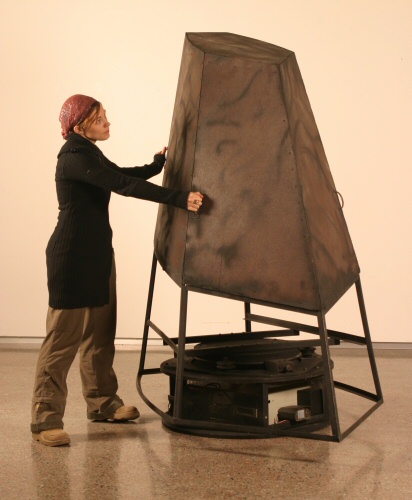
White believes that electronic art offers valuable and completely useless experimental models
The robot’s brain is a modified 80386 computer; The body is a truncated volume of plywood and angle iron curled up on a rotating platform. The Helpless Robot, unable to move on its own, encourages visitors to turn it using the handles mounted on its side. When ignored, it becomes friendly and attentive; higher levels of assistance produce more aggressive requests.
http://www.normill.ca/artpage.html https://www.fondation-langlois.org/html/f/media.php?NumObjet=62070
The Pioneers
What separates us from the pioneers is probably the arrival of computers. The previous generation had only classic electronics: analog components.
Nicolas Shöeffer
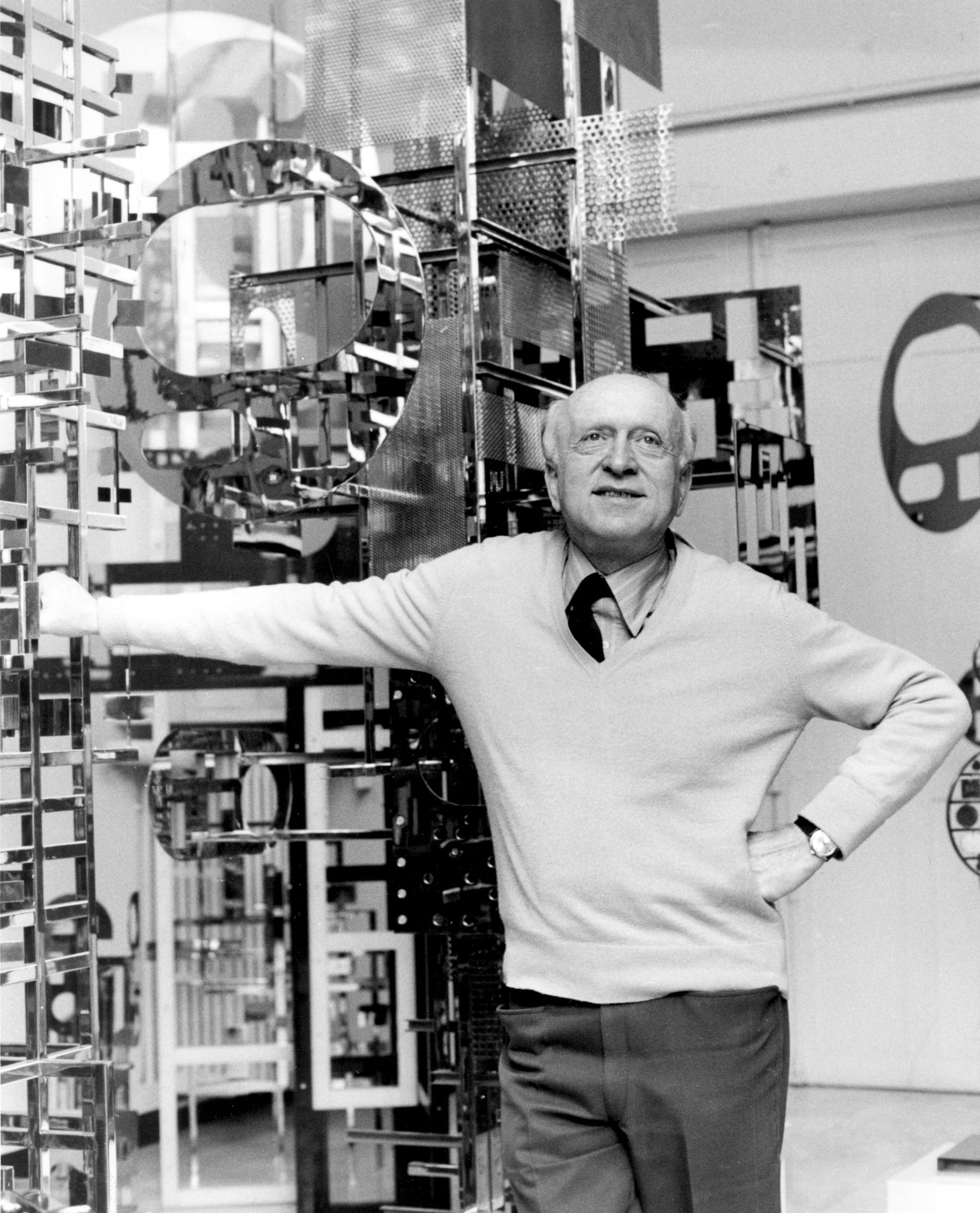
Inventor in 1948 of Spatiodynamism “the constructive and dynamic integration of space in the visual work.” He is the great old-timer on this short list.
“For Shöeffer, the sculptor must use the techniques of his time: Mycenaean sculptors carved alabaster with bronze chisels, and we owe Praxiteles and Phidias to the iron chisels used to carve marble. “Chisels as such are neither meaningful nor eternal, and each era creates its own chisels.” Therefore, the 20th-century sculptor must use the electrical and electronic techniques at his disposal to bring sculpture to life.” (Wikipedia.org)
A video that Shöeffer considered a work in its own right: https://www.youtube.com/watch?v=dO0pffhB9SU
https://books.naimaunlimited.com/naima/schoffer_spatiodynamisme_kle2.pdf
Pierre Berger
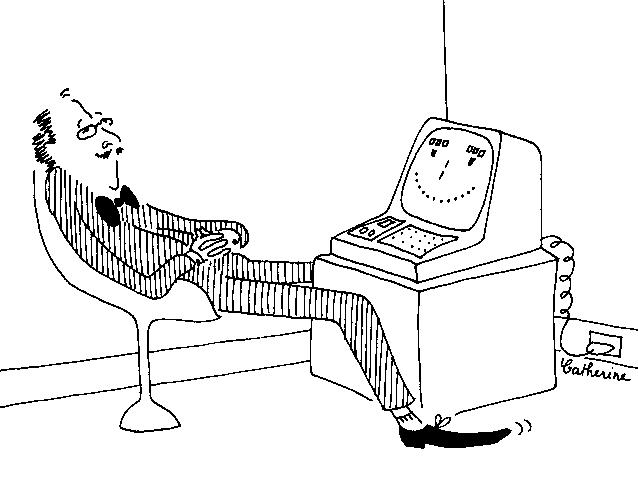
A longtime editor-in-chief of Le Monde Informatique, Pierre Berger passionately follows and comments on what artists imagine and create with this tool.
 MAX: a big job - all in analog components.
MAX: a big job - all in analog components.
In the 1970s, he created “Max,” which he designed and developed in analog electronics a few years before the rise of microprocessors.
No one’s perfect. Pierre Berger quickly turned his attention to image and theory. Two activities that made him a “prisoner of screens.” He would be savagely excluded from this list if… If he weren’t one of my best friends.
P. Berger is the author of numerous publications. Notably, The Dictionary of Digital Creation. DICCAN
http://diccan.com/ https://www.afscet.asso.fr/ Computers liberate humans - L’Harmatan
Founder of the Algorists group